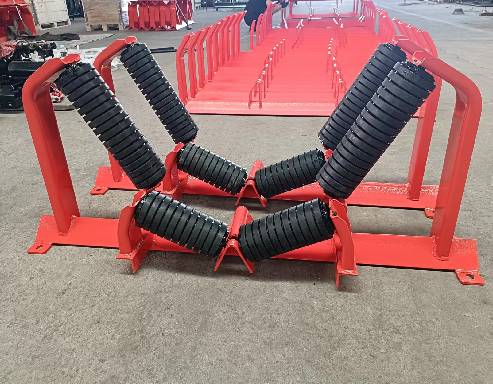 Afrikaans
Afrikaans  Albanian
Albanian  Amharic
Amharic  Arabic
Arabic  Armenian
Armenian  Azerbaijani
Azerbaijani  Basque
Basque  Belarusian
Belarusian  Bengali
Bengali  Bosnian
Bosnian  Bulgarian
Bulgarian  Catalan
Catalan  Cebuano
Cebuano  Corsican
Corsican  Croatian
Croatian  Czech
Czech  Danish
Danish  Dutch
Dutch  English
English  Esperanto
Esperanto  Estonian
Estonian  Finnish
Finnish  French
French  Frisian
Frisian  Galician
Galician  Georgian
Georgian  German
German  Greek
Greek  Gujarati
Gujarati  Haitian Creole
Haitian Creole  hausa
hausa  hawaiian
hawaiian  Hebrew
Hebrew  Hindi
Hindi  Miao
Miao  Hungarian
Hungarian  Icelandic
Icelandic  igbo
igbo  Indonesian
Indonesian  irish
irish  Italian
Italian  Japanese
Japanese  Javanese
Javanese  Kannada
Kannada  kazakh
kazakh  Khmer
Khmer  Rwandese
Rwandese  Korean
Korean  Kurdish
Kurdish  Kyrgyz
Kyrgyz  Lao
Lao  Latin
Latin  Latvian
Latvian  Lithuanian
Lithuanian  Luxembourgish
Luxembourgish  Macedonian
Macedonian  Malgashi
Malgashi  Malay
Malay  Malayalam
Malayalam  Maltese
Maltese  Maori
Maori  Marathi
Marathi  Mongolian
Mongolian  Myanmar
Myanmar  Nepali
Nepali  Norwegian
Norwegian  Norwegian
Norwegian  Occitan
Occitan  Pashto
Pashto  Persian
Persian  Polish
Polish  Portuguese
Portuguese  Punjabi
Punjabi  Romanian
Romanian  Russian
Russian  Samoan
Samoan  Scottish Gaelic
Scottish Gaelic  Serbian
Serbian  Sesotho
Sesotho  Shona
Shona  Sindhi
Sindhi  Sinhala
Sinhala  Slovak
Slovak  Slovenian
Slovenian  Somali
Somali  Spanish
Spanish  Sundanese
Sundanese  Swahili
Swahili  Swedish
Swedish  Tagalog
Tagalog  Tajik
Tajik  Tamil
Tamil  Tatar
Tatar  Telugu
Telugu  Thai
Thai  Turkish
Turkish  Turkmen
Turkmen  Ukrainian
Ukrainian  Urdu
Urdu  Uighur
Uighur  Uzbek
Uzbek  Vietnamese
Vietnamese  Welsh
Welsh  Bantu
Bantu  Yiddish
Yiddish  Yoruba
Yoruba  Zulu
Zulu The Role of Gravity in Pulley Systems and Their Mechanical Advantages
Understanding Gravity and the Role of a Pulley System
Gravity is one of the most fundamental forces in our universe, pulling objects toward each other and giving weight to physical entities. It's this omnipresent force that plays a crucial role in many mechanical systems, including pulleys. A pulley, a simple machine consisting of a wheel on an axle or shaft, is designed to help lift or lower heavy objects with the aid of gravity. By understanding how gravity interacts with pulleys, we can harness this natural force to perform work more efficiently.
Understanding Gravity and the Role of a Pulley System
One common application of pulleys is in construction and heavy lifting. Cranes often employ pulley systems to move large materials to significant heights. When a contractor needs to lift steel beams to the upper floors of a building, they often use a pulley system with a counterweight to balance the weight of the beam. This setup allows workers to lift heavy loads with less effort, demonstrating how gravity can be effectively utilized through mechanical systems.
gravity take up pulley

Moreover, there are various types of pulley systems, each designed to optimize for specific scenarios. The fixed pulley, for instance, remains stationary and helps change the direction of the input force. A movable pulley, on the other hand, moves with the load, effectively reducing the amount of force needed to lift an object. Compound pulley systems, which combine fixed and movable pulleys, provide greater mechanical advantage and efficiency, helping lift extremely heavy loads with minimal effort.
The synergy between gravity and pulley systems becomes even more fascinating when we consider the concept of mechanical advantage, which allows workers to lift heavier objects than they could by using their strength alone. Mechanical advantage is the ratio of the output force to the input force. In a simple pulley system, the mechanical advantage is equivalent to the number of rope sections supporting the load. This means that with a well-designed pulley system, the force required to lift an object can be significantly reduced, making labor-intensive tasks much more manageable.
In educational settings, students learn about gravity and pulleys through hands-on experiments and problem-solving activities. By building simple pulley systems, they can interactively explore the principles of forces and movement. These experiments not only clarify the relationship between gravity and mechanical systems but also inspire innovation and creativity in students as they design new ways to manipulate these forces.
In conclusion, the interplay between gravity and pulley systems exemplifies the beauty of physics in our daily lives. By understanding this relationship, we can appreciate the ingenuity behind mechanical systems that have been pivotal to human progress. Whether in construction, shipping, or even recreational sports like rock climbing, pulleys demonstrate how we can leverage natural forces to simplify tasks and enhance productivity. As we continue to innovate and explore new applications, the fundamental principles of gravity and pulleys will undoubtedly remain integral to our understanding of mechanics and engineering.
-
Revolutionizing Conveyor Reliability with Advanced Rubber Lagging PulleysNewsJul.22,2025
-
Powering Precision and Durability with Expert Manufacturers of Conveyor ComponentsNewsJul.22,2025
-
Optimizing Conveyor Systems with Advanced Conveyor AccessoriesNewsJul.22,2025
-
Maximize Conveyor Efficiency with Quality Conveyor Idler PulleysNewsJul.22,2025
-
Future-Proof Your Conveyor System with High-Performance Polyurethane RollerNewsJul.22,2025
-
Driving Efficiency Forward with Quality Idlers and RollersNewsJul.22,2025





























